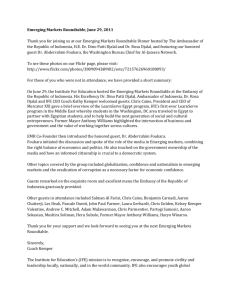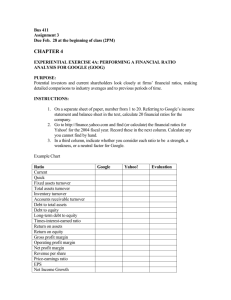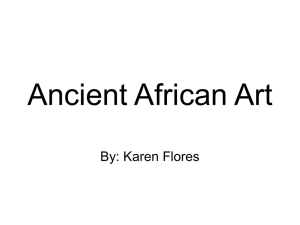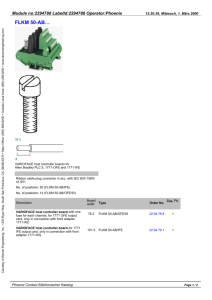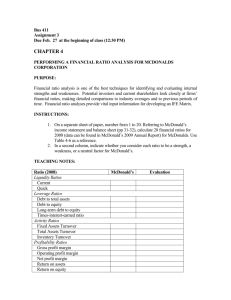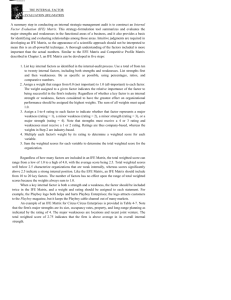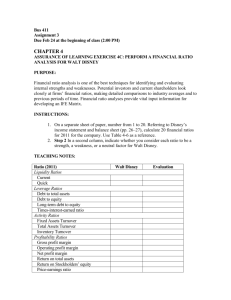SatCon Delivery Workshop
advertisement
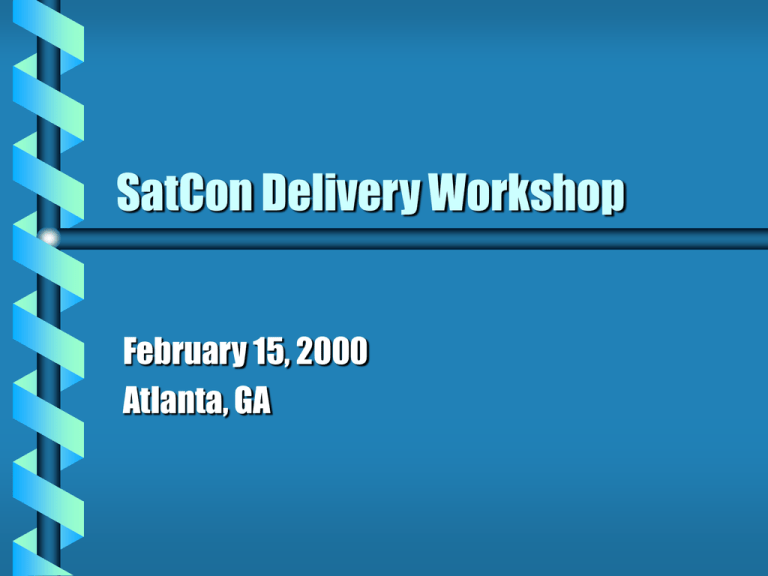
SatCon Delivery Workshop February 15, 2000 Atlanta, GA SatCon WG White Paper Airline Survey - defines airline interest in SatCon Delivery • Live TV --- connectivity • Increased content --- passenger choice Vendor Profile - who does what Reference Model- step-by-step walk through the supply chain Table of Contents - White Paper 1.0 Introduction 1.1 Objective 1.2 Methodology 1.3 Background & Participants 1.4 Issues 1.5 Glossary of Terms 1.6 Reference Model Table of Contents - White Paper 2.0 The Nature of Satellite-Delivered Content 2.1 The Supply Chain: Production Vs. Distribution 2.2 Content Tiers: “Premium”, “Basic”, & “PPV” 2.3 Time Frames in the Infrastructure of Channels 2.4 Reference Model - Broadcast, Cable, & Satellite TV Table of Contents - White Paper 3.0 Copyright Law 3.1 U.S. Copyright: Private Home Use Vs. Public Performance Table of Contents - White Paper 4.0 Regulatory Considerations Table of Contents - White Paper 5.0 Business Practices of Content Owners 5.1 Windows of Availability 5.2 Secondary Use 5.3 Rights Strategies 5.4 Distribution of IFE Rights Table of Content - White Paper 6.0 Implementing Satellite Delivery 6.1 Pricing Dynamics 6.2 Administrative Costs 6.3 Advertising Costs 6.4 Editing Summary Airline Survey 80% of respondents were interested in both live content and delivery of pre-recorded content via SatCon 60% see SatCon as replacing other forms of delivery 40% became interested in SatCon because they thought content would be free 100% now know that content requires license fees Copyright Laws... Distinguish between • Private Home Use • Public Performance Exhibition Grant exclusive rights to copyright owners to perform their works publicly Require airlines to obtain licenses to utilize satellite-delivered content onboard 1976 Copyright Act, Title 17 To perform a motion picture “publicly” under the law means “to perform or display it at a place open to the public or at any place where a substantial number of persons outside a normal circle of family and its social acquaintances are gathered.” - (section 106 [4]) Public Performance Licenses... … must be obtained from copyright owners or their beneficiaries Content Provider… seller Content Aggregator… buyer A content provider sells content… a content aggregator uses content to sell a service. Deregulation... … is resulting in a proliferation of content … which in turn is fragmenting the audience Prime time series drawing 20% or more of sets in use: 1993 2000 35 6 Regulation National Radio Act in U.S. nationalized the airwaves in 1927 FCC was created in 1934 to regulate telephone & telegraph common carriers, allocate radio frequencies, & license radio & TV stations Significantly impacts content supply & demand Governs technical standards such as ATV & HDTV Production Vs. Distribution Two separate functions: 1. Production is more capital intensive than distribution 2. Regulatory agencies limit broadcasters from owning their own content Direct Broadcast Satellite (DBS) … an alternative delivery method for cable television Cable & DBS offer the same content Originally, the content for cable & DBS was all created for another medium Subsequently, content was created specifically for cable & DBS Movies, off-network series Bigger budgets; rights widely-dispersed; IFE market established 24-hour news & sports Medium budgets; rights largely contained by single source; IFE market established Special-interest, single-topic, documentary Lower budgets; rights either contained by single source or available to aggregator since IFE not established Movies, off-network series Bigger budgets; rights widely-dispersed; IFE market established 24-hour news & sports Medium budgets; rights largely contained by single source; IFE market established Special-interest, single-topic, documentary Lower budgets; rights either contained by single source or available to aggregator since IFE not established Channel Output Agreements … all of the output of a channel can be licensed from a single source. Content aggregators are limiting acquisitions to channel-output agreements Content providers are retaining as exclusive the rights to content with established IFE value Movies, off-network series High audience viewership rating; limited repeat factor 24-hour news & sports Medium audience viewership rating; high repeat factor & time multiplexing Special-interest, single-topic, documentary Low audience viewership rating; high repeat factor & time multiplexing Reaching Critical Mass … that level of content which assures optimum quantity Some channels make a lesser contribution to critical mass than others due to time multiplexing Modified Content Terrestrial Channels IFE Channels A B C D E 1 2 Critical Mass is the Critical Issue Movies, off-network series 24-hour news & sports Special-interest, single-topic, documentary Content Licensing Issues Summary 1. IFE is a public performance exhibition governed by copyright laws. 2. Satellite delivery of content is regulated by government agencies whose policies impact IFE. 3. Rights to “traditional” IFE content are so widely dispersed as to make their aggregation to match satellite channel configurations largely prohibitive, except on a channel-output basis, outsourced to content aggregators & service providers. Content Licensing Issues Summary 4. Content available on a “channel-output” basis is designed for residential consumption on a different time-frame, and may require modification for optimum IFE application. 5. Very little satellite-delivered content is truly live; live TV and SatCon delivery may need to be considered separately. 6. Reaching critical mass for 24, 30, or largerchannel systems involves a value proposition which is subject to different opinions. IFE Fortune Cookies Content, not delivery, drives IFE Involve the core competence of content experts in your planning. The “value chain” doesn’t work in IFE. Find IFE success in horizontal partnerships. IFE Fortune Cookies IFE cannot be vertically integrated. Those who try to build a business using someone else’s content had better know the content issues. Content cannot be commoditized. Design the system around the content, not the content around the system.
